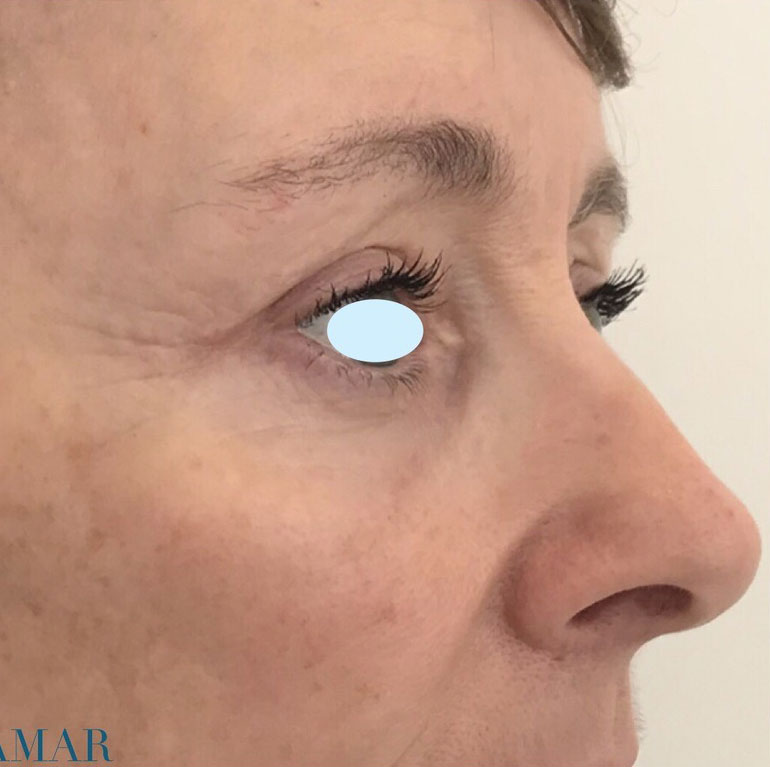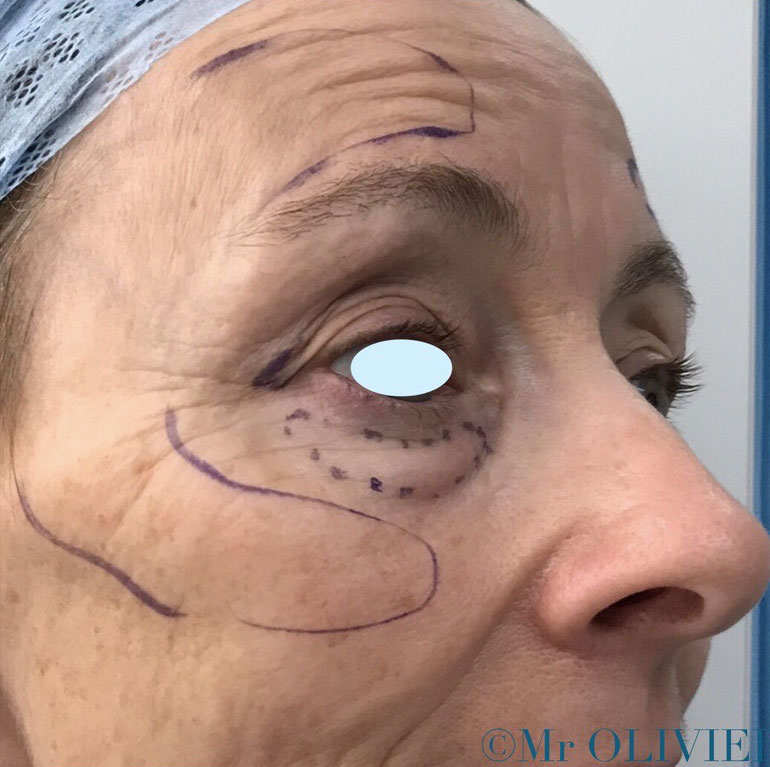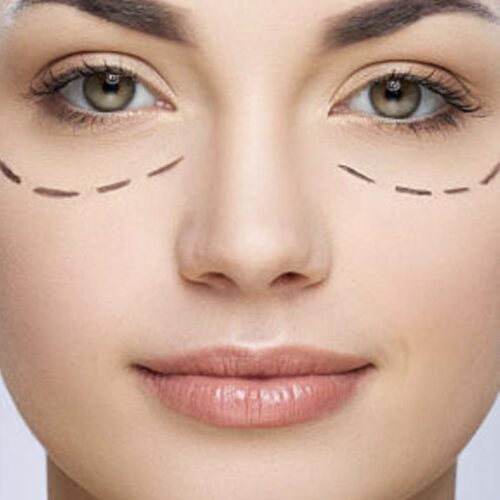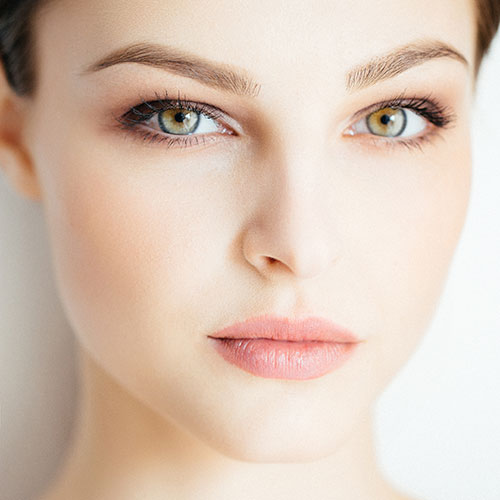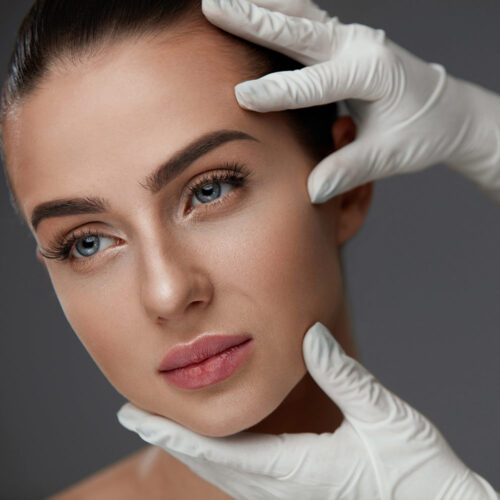
Spotlight on: Blepharoplasty and fat transfer to face surgery
As we age, the skin around our eyes starts to lose its elasticity causing gradual fine lines and wrinkles and over time, under eye bags will start to develop as the muscles relax and lower eyelids sag down. In addition, our upper eyelids can also start to droop and wrinkle with age. Heavy upper eyelids, dark circles or bags around the eyes, often leads to a tired and aged look.
Blepharoplasty, or eyelid reduction surgery is to remove excess skin or fat from the upper or lower eyelids, to improve hooded or droopy eyelids or eye bags. During the procedure, the loose skin and excess fatty tissue around the eye area will be removed, tightening the relaxed muscles and giving the skin a firmer, more youthful appearance.
This can often be combined with fat transfer to restore volume in the face and fill out areas that may need it, such as the hollows of the cheeks, temples and eyebrows, giving a result that is subtle and rejuvenating with a much more youthful result. Fat cells are removed by liposuction – usually the stomach, thighs or buttocks. These cells are then cleansed and processed, before being injected into the facial area.
Did you know?
WHERE WILL THE INCISIONS BE POSITIONED?
For the upper eyelids, they are concealed in the fold situated at the mid-point of the eyelid, between the mobile and fixed parts. For lower eyelids, in the case of isolated “bags” (without excess skin to be removed), a blepharoplasty can be carried out by the transconjunctival approach, that is by using incisions placed inside the eyelids, thus leaving no visible scar.
Any fat transfer to face incisions are minimal and very hard to see. During treatment, small incisions of around 0.5cm will be made, hidden as much as possible in the natural creases close.
HOW LONG DOES THE SURGERY TAKE?
A blepharoplasty and fat transfer to face is a short operation, taking between 1-2 hours.
HOW MANY OF MY FAT CELLS WILL SURVIVE?
Between 50 and 70 percent of fat cells survive the transfer process, establishing a blood supply, meaning the results are permanent. Mr Olivier Amar will allow for this in his initial evaluation of the amount to be injected.
WHAT EFFECT CAN SMOKING AND ALCOHOL HAVE ON MY FAT GRAFTING RESULTS?
Certain lifestyle factors can increase the risk of complications during and after your surgery. The most common impact of smoking before your surgery is that it increases your chances of developing an infection and inhibits your body’s natural healing processes. We insist that all patients stop smoking and using nicotine products at least six weeks before surgery. Reducing alcohol intake is also strongly advised. This is particularly important for fat grafting surgery in which the fat’s viability post-procedure is materially reduced in a smoker population.
DO I NEED TO DO ANYTHING BEFORE THE PROCEDURE?
Prior to any blepharoplasty procedure, you are required to provide the results of a recent eye test or schedule one in advance of any surgery. Recent results must be within the last 6 months. This is to detect and eliminate any anomalies which could complicate the procedure or indicate that it is not recommended for you.
WHAT FORM OF ANAESTHETIC WILL BE USED?
A blepharoplasty and small quantity fat transfer may be performed under local anaesthetic, however more extensive fat grafting is performed under total intravenous anaesthesia (TIVA), a technique of anaesthesia which uses a combination of agents given exclusively via the intravenous route without the use of gas anaesthesia. This means you will sleep comfortably throughout the procedure and wake immediately afterwards with a significantly reduced likelihood of feeling groggy or nauseous. The anaesthesia will be explained to you by your anaesthetist during the preoperative consultation. Having surgery under TIVA allows you to go home the same day to rest and recuperate in comfort.
What can I expect after blepharoplasty and fat transfer to face surgery?
You may experience bruising and swelling 1-2 few weeks after the operation, this should settle between 7 and 10 days. Initially there will be bruising in the fat harvesting and reinjection areas, this should settle down between ten and fifteen days but continues to improve with time. You can expect to experience mild pain and discomfort, which can be managed by a pain killer prescription and eye ointments provided.
You will be asked to come in for a post-operative nurse appointment one week after your surgery. At this point your incision sites will be reviewed, stitches removed and your preliminary healing will be assessed. You will come back at six week after surgery to be reviewed by Mr Amar.
Your eyes may feel dry and gritty initially, but this usually resolves after a short time. Therefore lubricating drops and ointment is always prescribed to keep the eye moist. Some people find they need to use this for over 1-month following surgery.
How long do I have to wait to return to normal activities following the surgery?
Depending on your type of daily activity, you will usually be able to resume your normal activities after one to two weeks. Strenuous activity should be avoided for several weeks. Mr Amar will discuss this with you in further detail at your consultation.
Dr. Amar took a lot of time to explain to me the pros and the cons of each interventions. He is a very kind and gentle man. His cautious demeanour created a sense of trust which gave me confidence to go ahead with the procedures.

